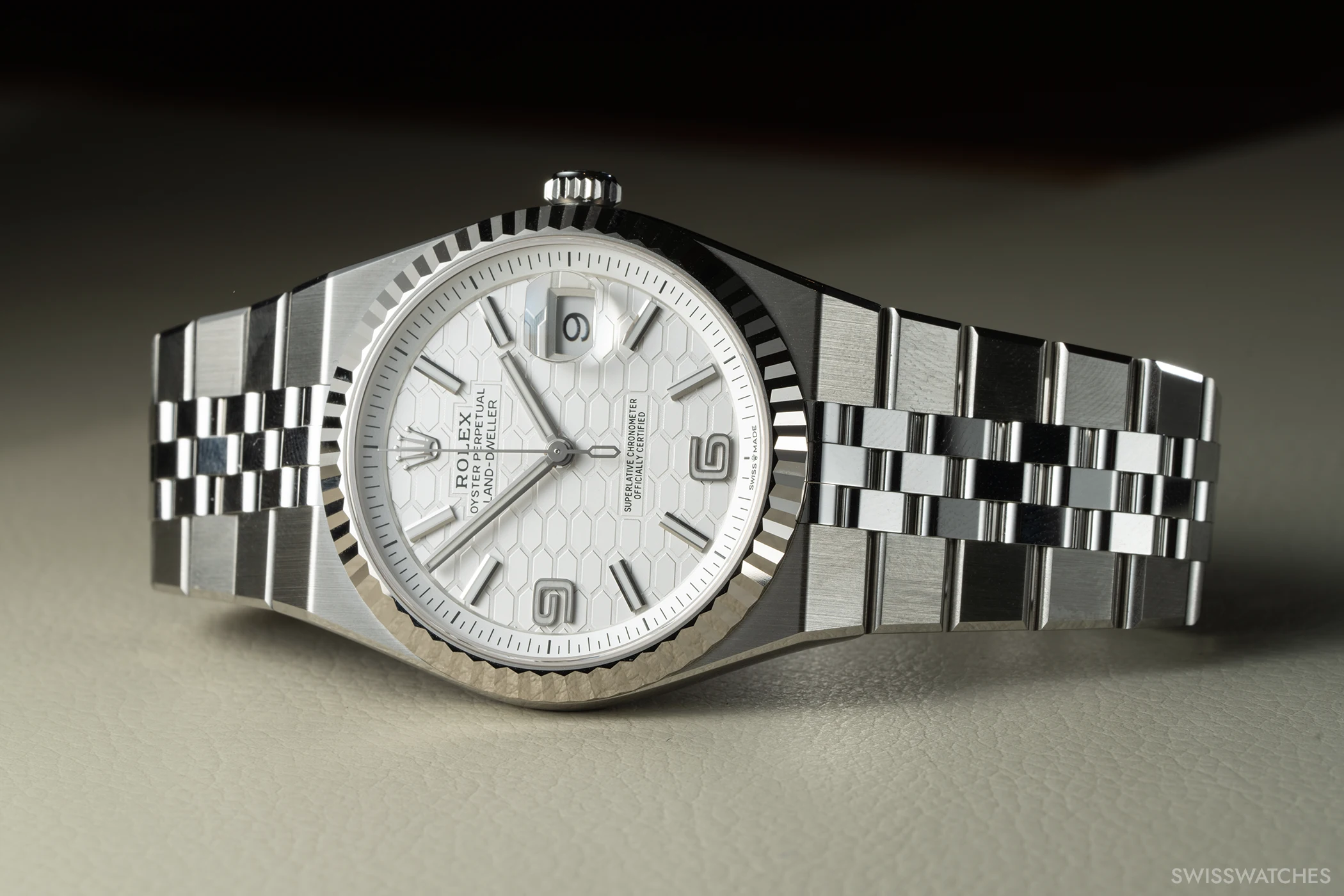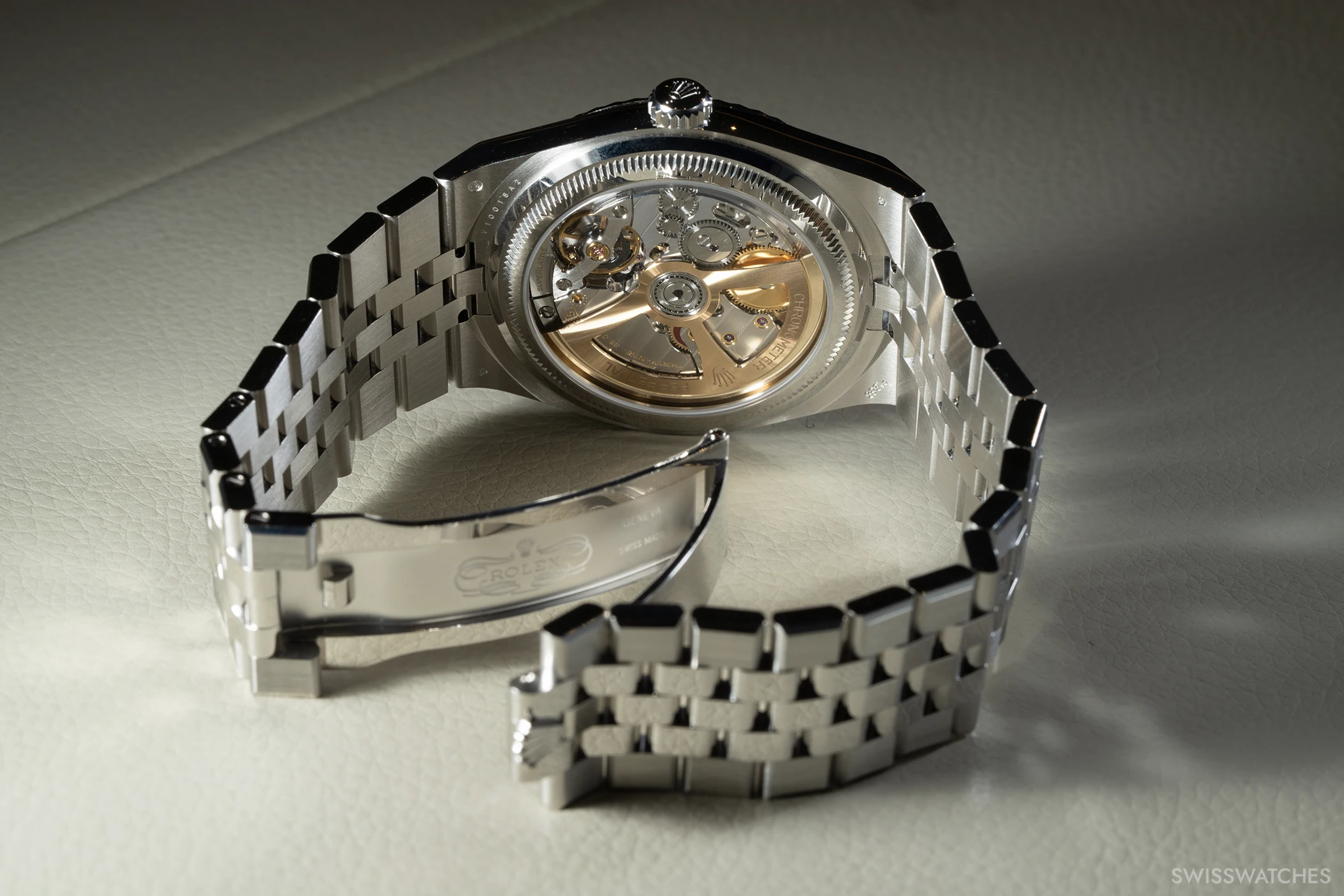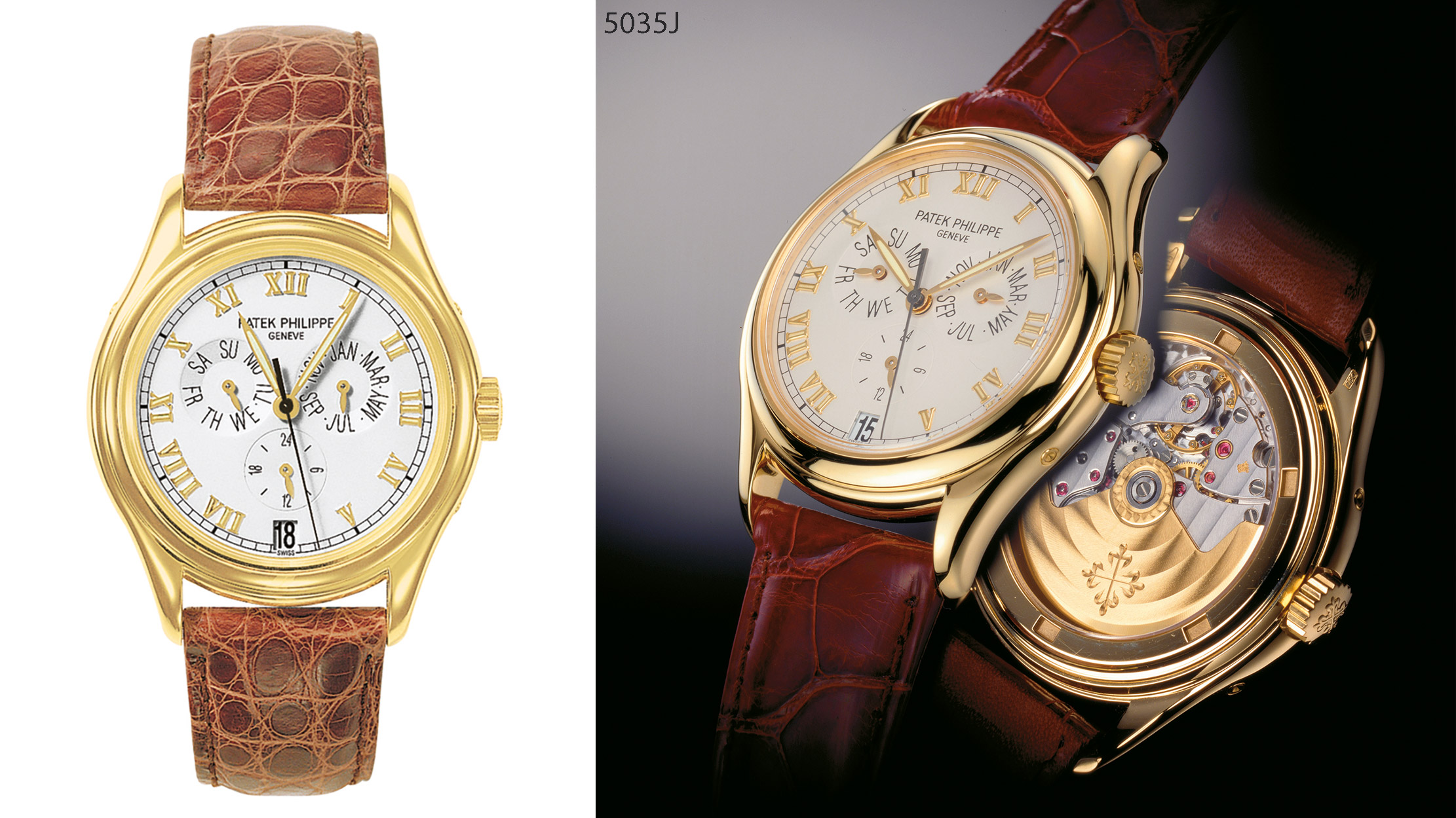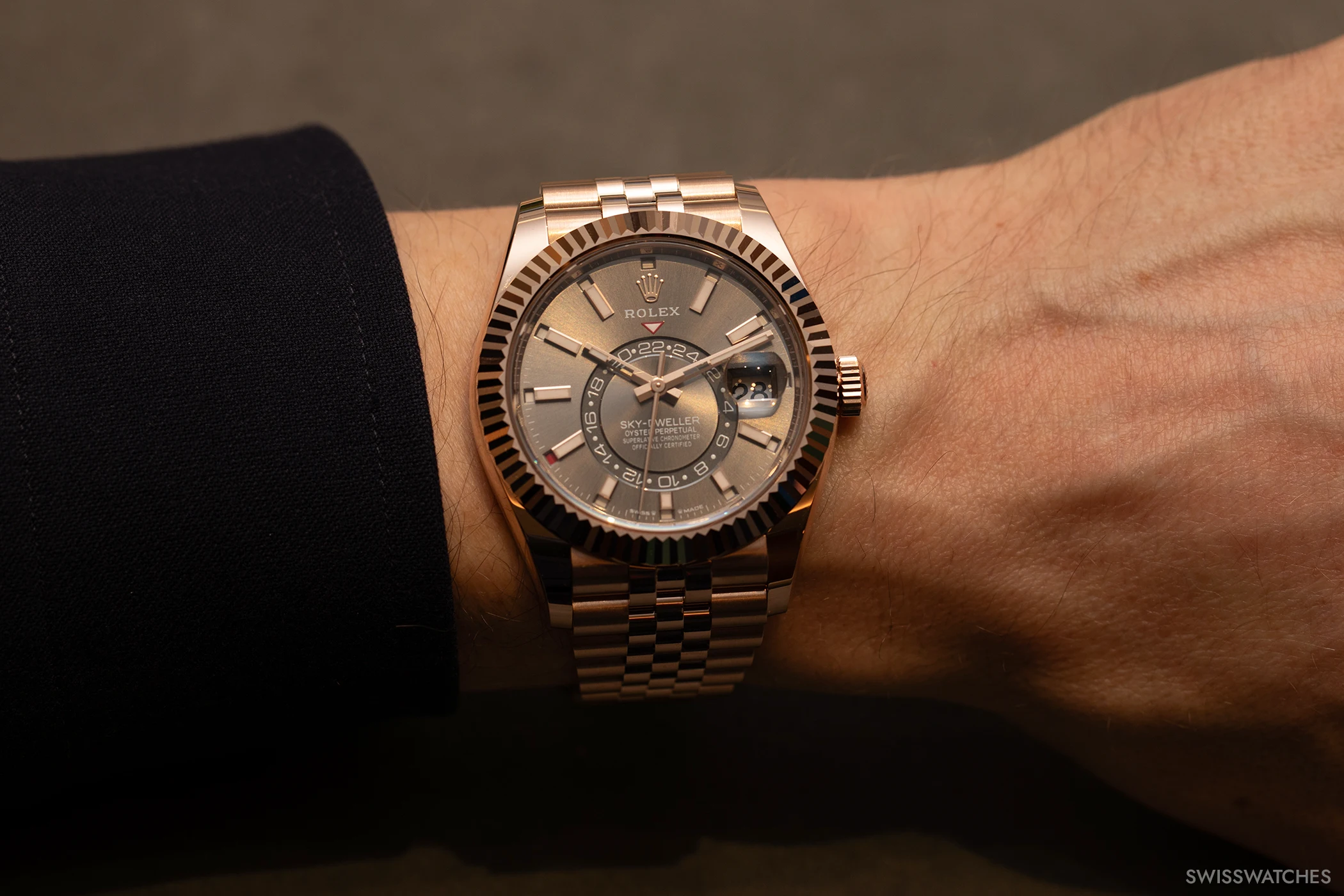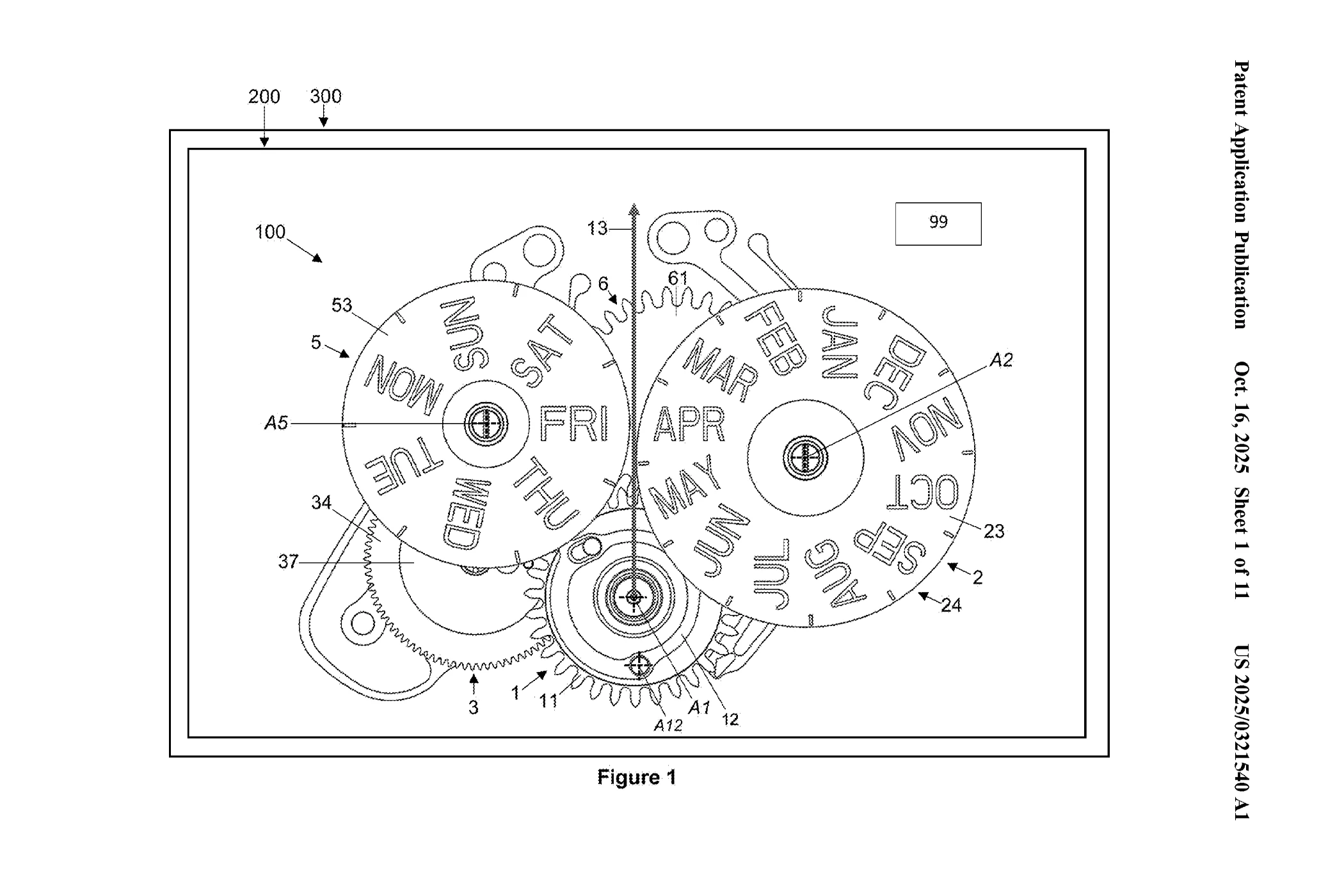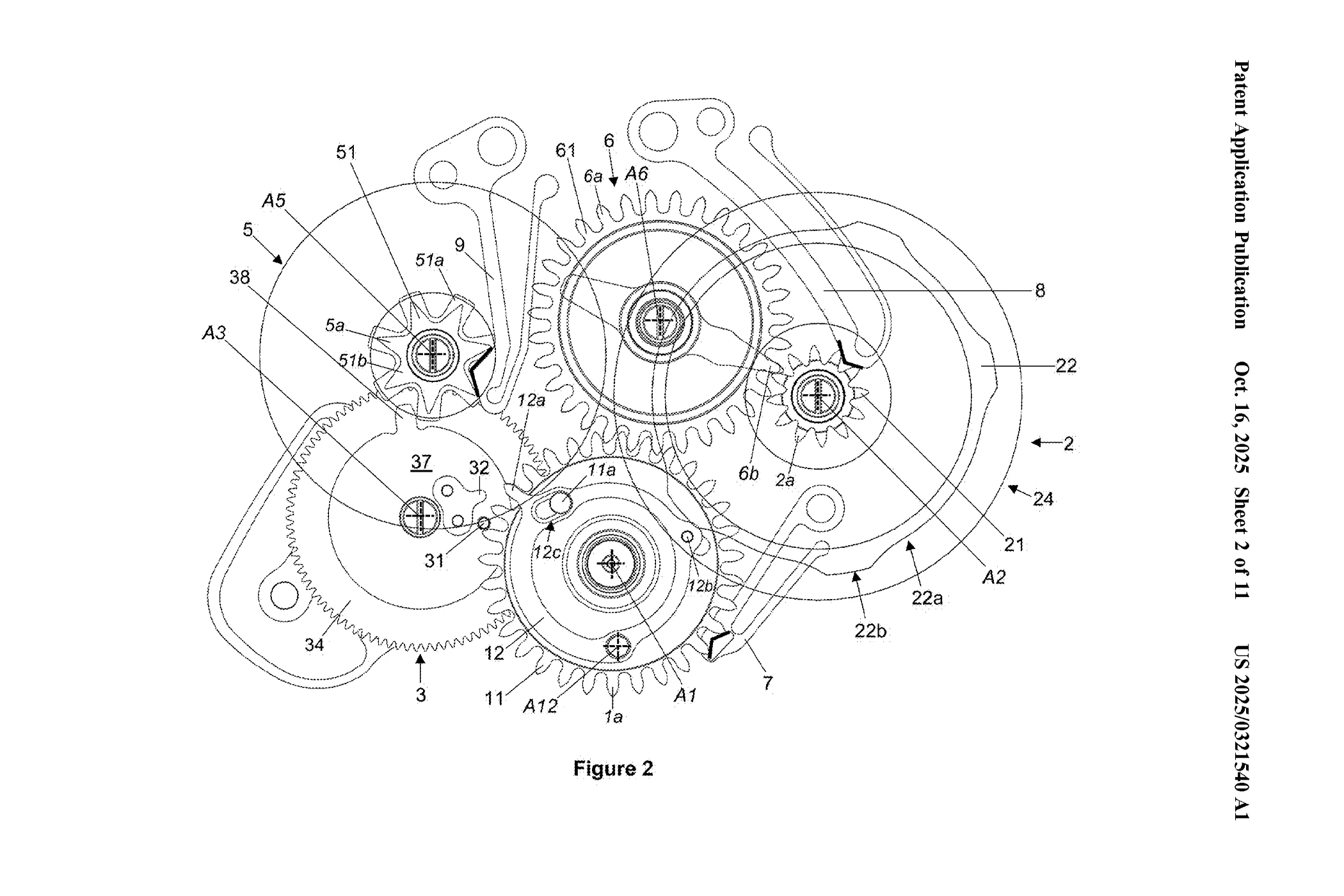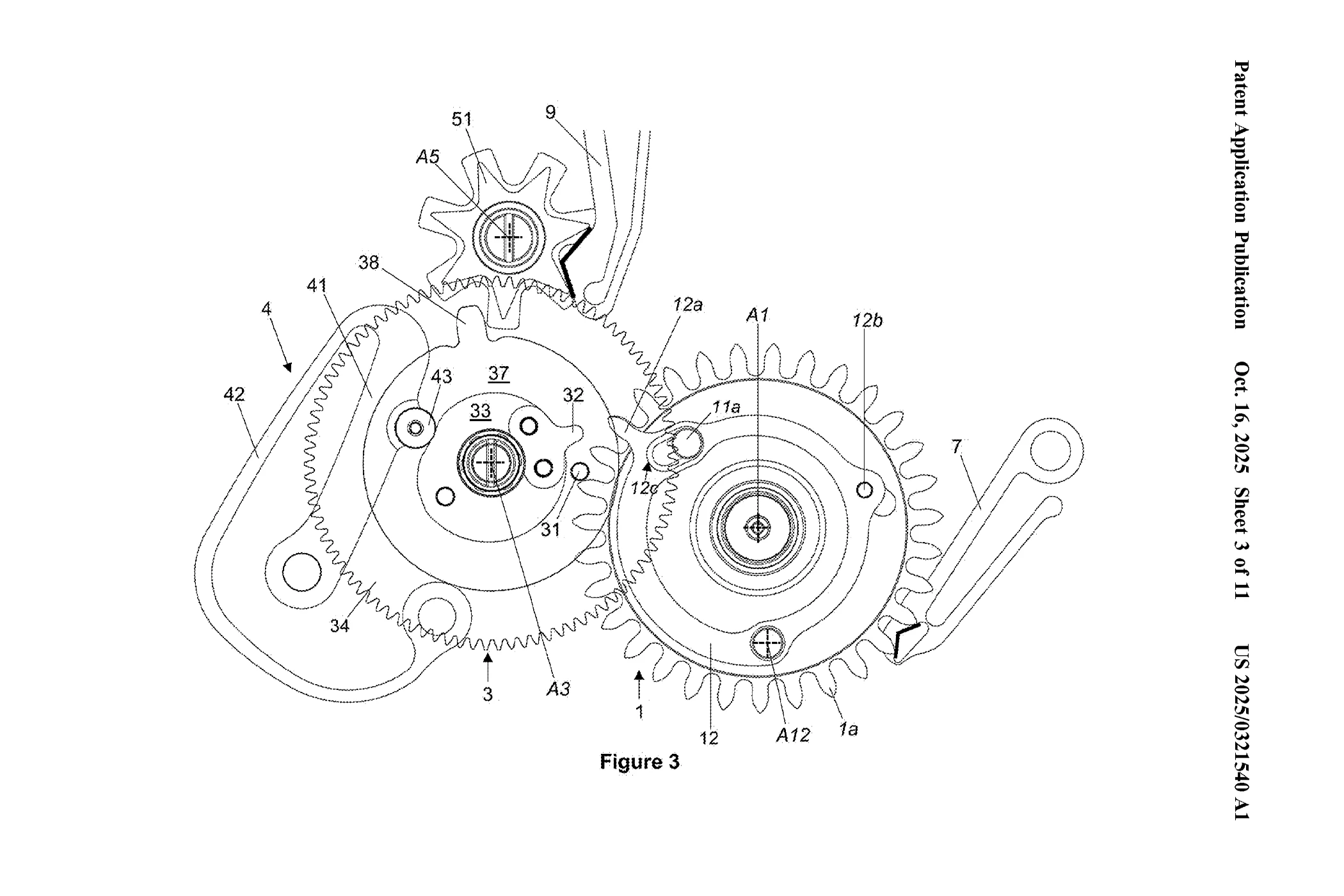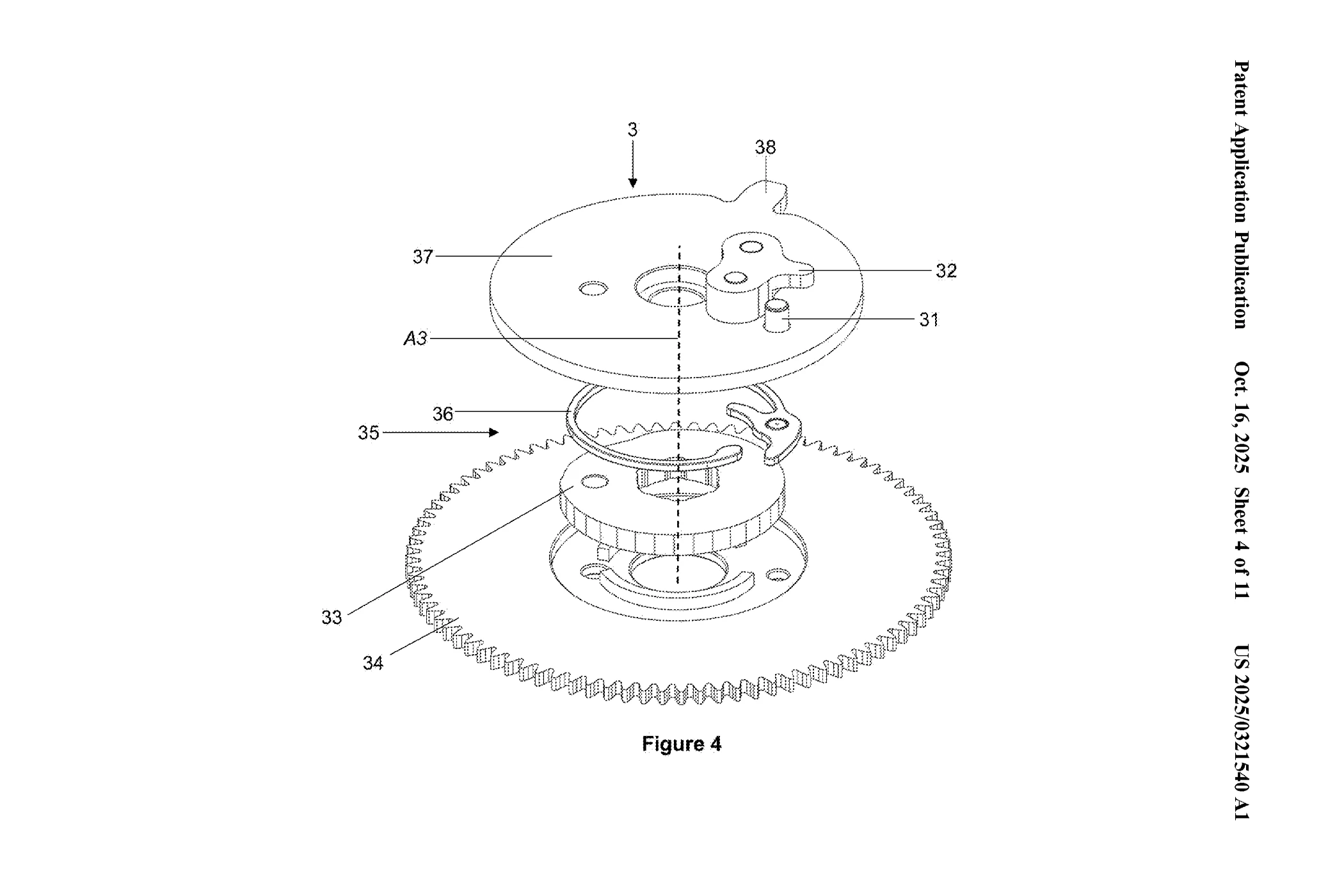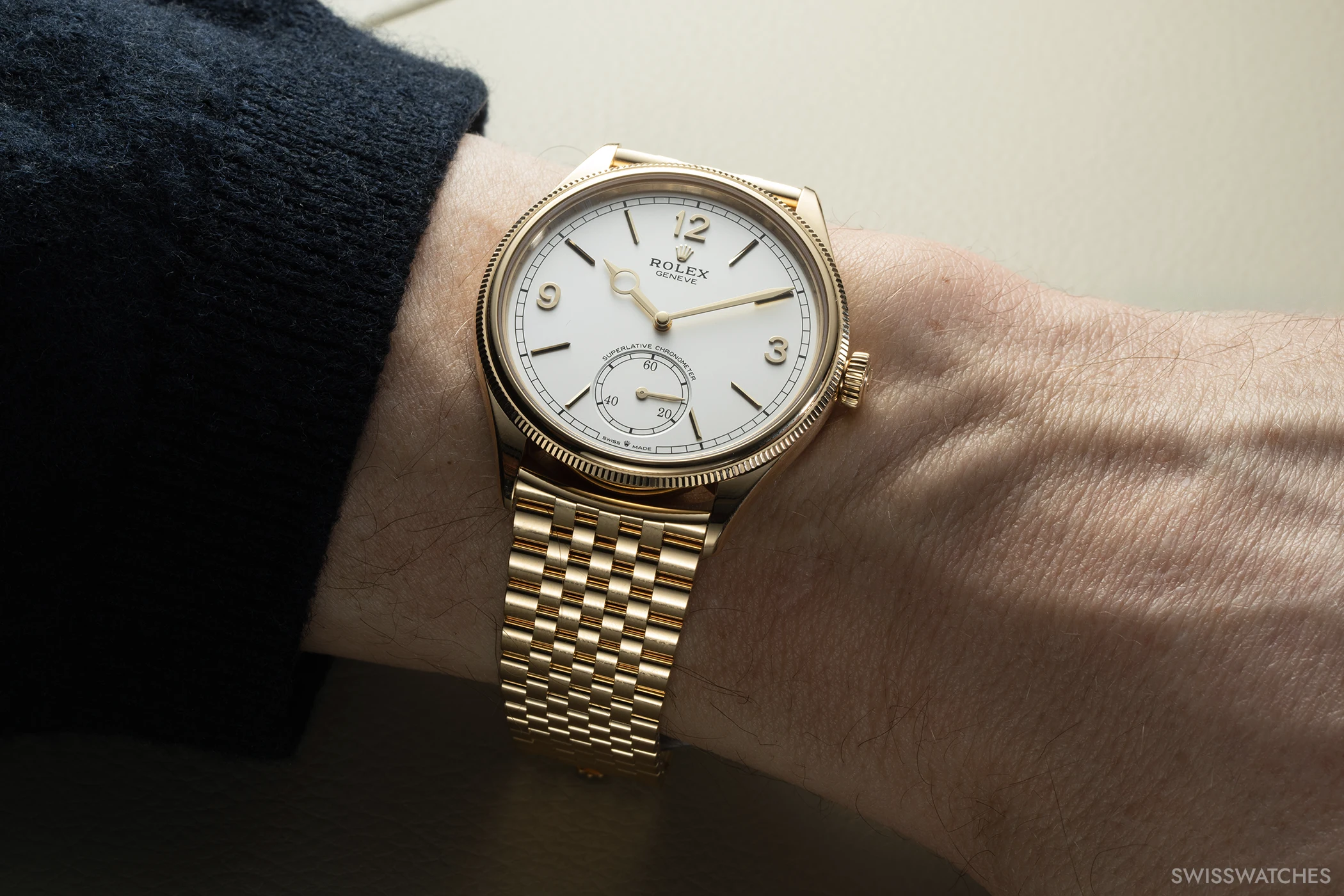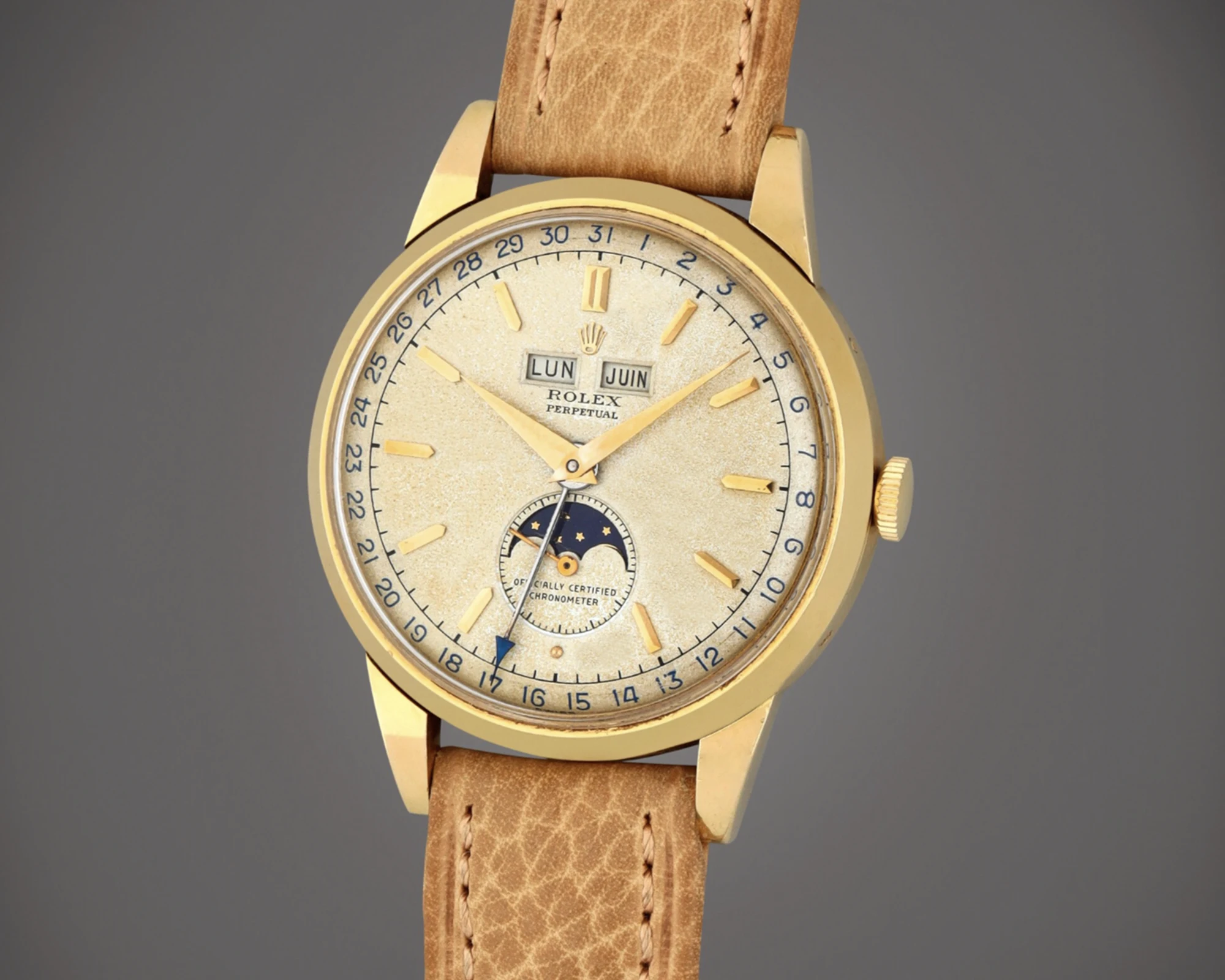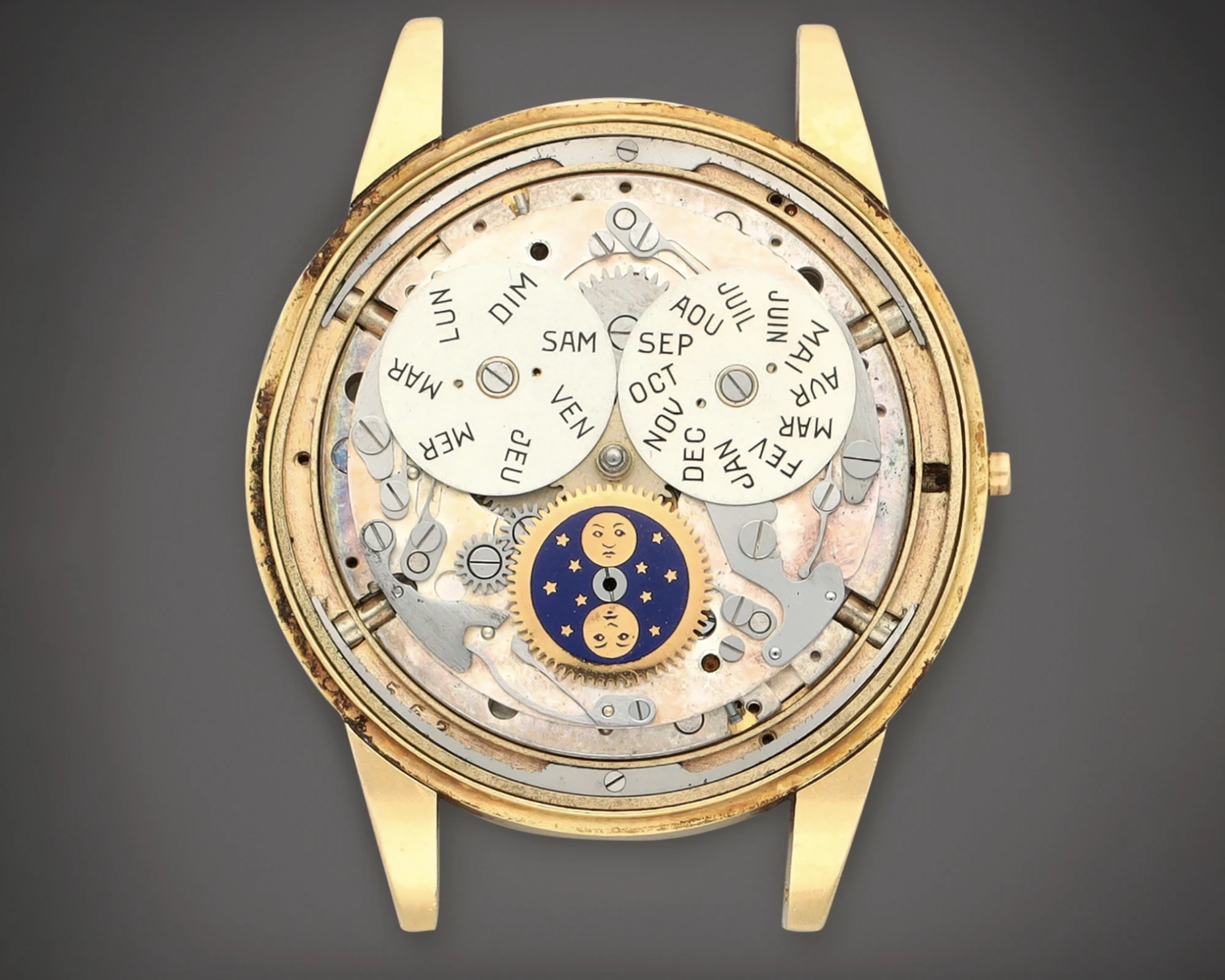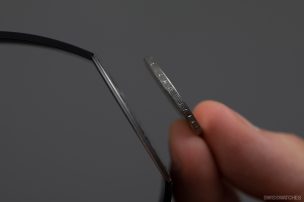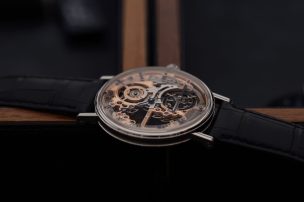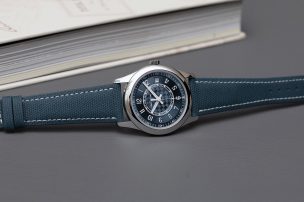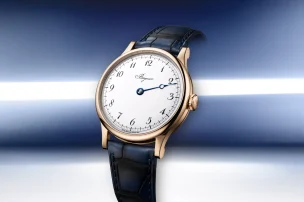
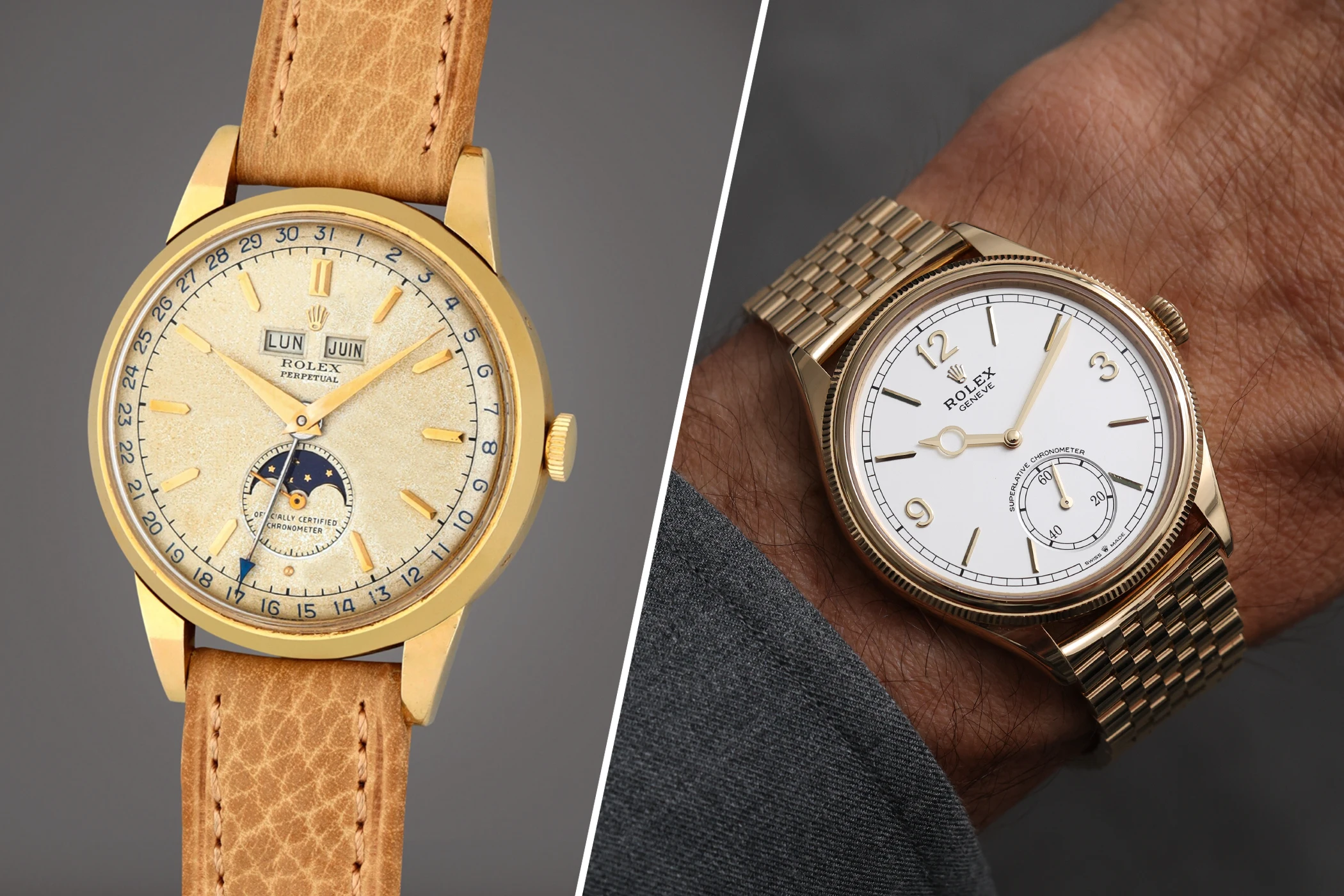
Will Rolex Soon Be Introducing a New Model With an Annual Calendar?
Will Rolex unveil a new model with an annual calendar at Watches and Wonders on 14 April 2026? Quite possibly! Rolex’s new patent shows significant improvements to the calendar mechanism. Although not every Rolex patent is implemented in a watch, Rolex surprised us with exactly that in 2025. We reported here on the patent for the new Rolex escapement – and a few days later, the spectacular Land-Dweller with the escapement was unveiled at Watches and Wonders.
Rolex has now obtained another patent for an annual calendar that improves the mechanism in two key areas. Firstly, it is a flat, simple and reliable system that consumes little energy. Secondly, it allows the date, day of the week, and month to be changed instantly, improving the appearance and readability.
What is an Annual Calendar?
As a reminder, an annual calendar ‘recognises’ months with 30 and 31 days and correctly changes from 30 November to 1 December, for example. To do this, it must display at least the month in addition to the date. On 1 March, an annual calendar initially displays 29 February and must be corrected manually in normal years. In leap years, when 29 February occurs, it instead shows 30 February on 1 March, so the wearer must intervene at the start of March regardless. Hence the name: the annual calendar runs correctly for one year, from 1 March to the end of February.
Incidentally, the annual calendar was invented and first implemented in a Patek Philippe watch – and that was only in 1996! Before that, there were only watches with a date display that showed the 31st of every month and had to be corrected five times a year, or complex perpetual calendars that, thanks to a 48-month wheel, also correctly displayed the different lengths of February in normal years and leap years.
The fundamental problem with the annual calendar is that in months with 30 days, the date must be changed a second time so that the 31st is skipped. However, months with 30 and 31 days do not simply alternate – of the twelve months of the year, only four have 30 days: April (4th month), June (6th), September (9th) and November (11th).
Rolex and the Annual Calendar
But doesn’t Rolex already have an annual calendar? That’s right: the Sky-Dweller, introduced in 2012. In addition to a second time zone, it displays the date in a window and has a discreet month display: next to the twelve hour indices, there is a small window in which the current month is marked in red. Rolex named its annual calendar, which was also patented at the time, ‘Saros’, and it operates with only four additional gears. Another special feature of the Sky-Dweller is its Ring Command system: the wearer can select which function the crown performs – correcting the calendar, setting the local time by the hour, or setting the home time – using the three different detent positions on the bezel.
The new Rolex patent
What is exciting about the new patent is not only the innovative solution, but also how the displays are arranged: the mechanism features two discs for weekdays and months placed side by side in the upper part of the dial, as well as a pointer date in the centre. This is reminiscent of the famous Rolex full calendars from the 1950s. Theoretically, other display formats could also be realised with the patented annual calendar, but this would require additional wheels – and the core of the patent is precisely to develop an annual calendar that is as simple, reliable, energy-efficient, and flat as possible. This makes the most sense if the displays are also located in the positions specified by the patent.
Another important feature of the new system is that the displays jump immediately. To achieve this, energy is collected continuously and then released all at once for the sudden switch. Looking at Figure 1 of the patent, it is noticeable that the weekday and month discs are designed so that their displays are visible through two equally sized windows, positioned symmetrically to the hand axis.from the vertical diagonal of the dial, and it is also shifted downwards to prevent the disc from protruding beyond the movement. The developers have therefore invested a considerable amount of conceptual work in order to achieve a visually appealing side-by-side display of weekdays and months.
The new Rolex Annual Calendar mechanism
Let us remember: the key feature of a yearly calendar is that in all months with 30 days, it immediately switches from the 30th to the 1st. Instead of one position, the date wheel must therefore be moved by two positions.
Figure 2 shows how the new Rolex patent works in principle: A programme wheel (22) on the month wheel (A2) pushes a tooth (12a) forward via a ring-shaped lever (12) on the date wheel (A1) for the short months, so that the 24-hour wheel (3) moves the date wheel one additional position at midnight with a lever (32). The programme wheel (22) has four protrusions (22b) for months with 30 days, which move a tooth (12a) forward via the ring-shaped lever (12) on the date wheel (A1), thus causing the additional shift. For months with 31 days (and in February, when a correction is required anyway), the programme wheel is flatter so that the tooth (12a) of the date wheel (A1) does not engage with the lever (32) of the 24-hour wheel (3) and it is therefore not moved by one additional position.
The Rolex quick-release mechanism
The second part of the patent concerns the innovative sudden switching of the three displays for the date (via a hand) and the day of the week and month (in a window). As can be seen in Figures 3 and 4, the mechanism for this is located on the axis of the 24-hour wheel (3). The discs (33) and (37) are not permanently connected to the wheel (3), but via an elastic pawl (36).
The shape of the disc (33) in conjunction with the spring (4), which presses sideways against the disc (33) via the roller (43), ensures that energy is slowly stored in the spring (4) from the gear train over a period of 24 hours. At midnight, the shape of the disc (33) causes the spring (4) to transfer the force to the disc (33) and the circuit to quickly switch via the switch fingers (38, weekday) and (31, month) and, if applicable, (32, months with 30 days).
What will the new Rolex calendar watch look like?
There are several scenarios, each with varying degrees of probability. The patent does mention a perpetual calendar several times, and fans have long been hoping for a Rolex with a grand complication. However, the patent describes a yearly calendar mechanism that cannot easily be expanded into a perpetual calendar. This would require further innovative techniques, which Rolex would certainly patent before unveiling. I therefore consider a perpetual calendar to be the least likely option.
Could Rolex replace the Sky-Dweller’s annual calendar with the new mechanism? It’s possible – after all, Rolex has also made technical improvements to the GMT-Master and Daytona without introducing a completely new model. However, it would not be so easy to adapt the new mechanism to the existing movement and special displays. Above all, the question arises as to why Rolex should go to the trouble of developing a new system and installing it in the Sky-Dweller, as there are no known problems with the watch.
Will we see another full calendar watch like the coveted Rolex models from the 1950s? I think that’s the most likely scenario. A 1908 annual calendar could indeed revive the style of the Rolex full calendars of the 1950s. The new annual calendar would be perfectly suited to the calibre 7140 with the small seconds. To complete the displays of Rolex’s historic full calendars, all that would be missing would be a moon phase display in the small seconds. This could easily be combined with the new annual calendar without increasing the height of the movement.
Credit © Sotheby’s
Rolex recently even trademarked the nickname ‘Padellone’ (Italian for ‘large frying pan’) for the coveted full calendar watch Ref. 8171. The model with the day and month at the top of the window, hand date and moon phase display in the small seconds would be a perfect match for the new annual calendar. And the reissue of the highly sought-after vintage model could give the 1908 collection, which is still somewhat under the radar, a new boost. The fact that the new model would be an innovative annual calendar with sudden jumping displays would fit in well with the retro design of the 1908 and its powerful calibre 7140 with silicon balance spring, Chronergy escapement and 66-hour power reserve.
Titlepicture © Sotheby’s
